Imagine selling the best milkshakes. You’ve spent months searching for an ideal combination of sweet juicy strawberries and delicious creamy milk. You’ve hired a great designer to craft a sleek logo and engaging marketing materials. Your milkshakes have just one problem: two-thirds of your customers are unable to digest milk and therefore, they can not enjoy your product.
This might sound silly, but it may as well be the state of our ecommerce apps in the near future. With ecommerce growing globally, ensuring your customers can use your product comes down to one important factor: being multilingual.
But what do you need to consider to make your app multilingual? What does that process look like? In a track session at Shopify Unite 2019, we shared the process we followed and the lessons we learned when making our app multilingual. Watch the video below, or read on for how you can make your app multilingual to serve a global audience.
Interested in getting started with Shopify app development? Learn more about how to build a Shopify app.
Ecommerce around the world
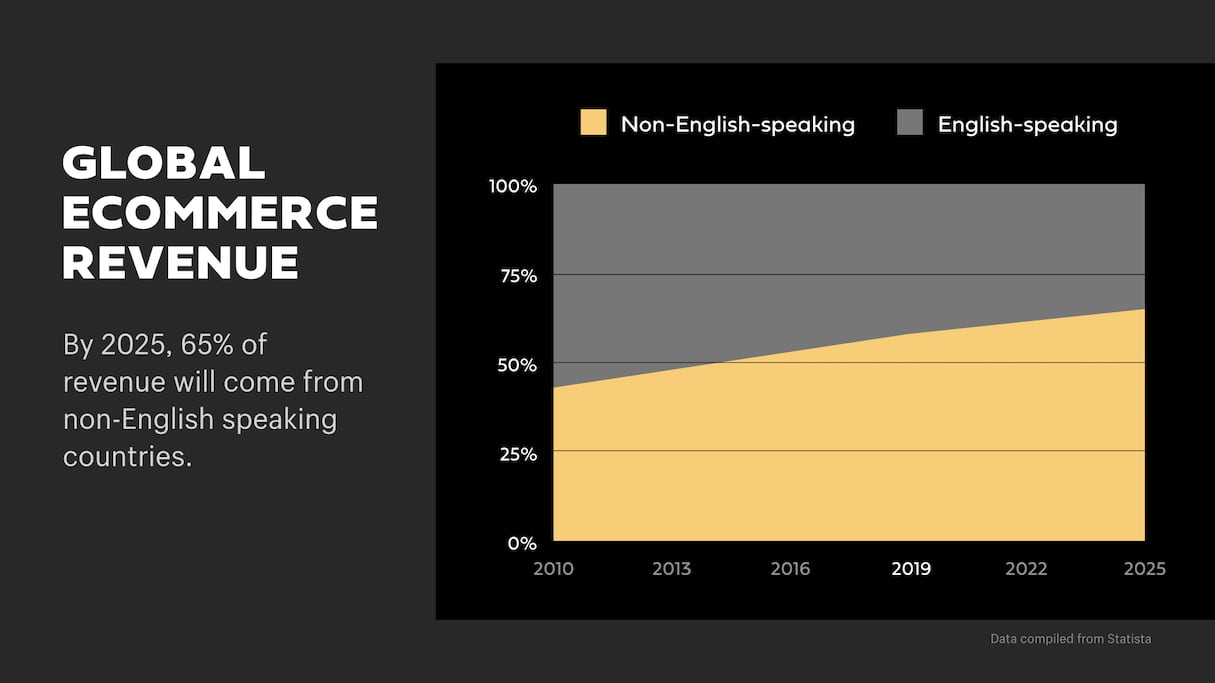
The world of ecommerce is quickly changing. Ten years ago, the bulk of ecommerce occurred in the English-speaking world. Today, 58 percent of ecommerce sales are made in countries that speak languages other than English. In the next 5 years, this number will exceed 65 percent.
"Today, 58 percent of ecommerce sales are made in countries that speak languages other than English. In the next 5 years, this number will exceed 65 percent."
Interestingly, most of this growth will come from countries like China or Mexico, where only a small part of the population speaks English. This means that two thirds of the merchants who will need our apps will be unable to use them, for one simple reason: they will not be able to understand them.

This challenge poses a unique opportunity. By making our app multilingual, we are doing more than just opening our apps to a large number of new potential clients. The advantage of these markets is that the existing competition is not yet very strong. This makes it easier and less expensive to promote our apps using strategies like content or performance marketing, or get listed in the new country-specific app collections in the Shopify App Store. By entering early, we can establish a strong foothold in these markets for our apps.
How we made our app multilingual
When we started developing apps almost ten years ago, we wanted to create apps that would be compliant with different invoicing legislations and would be available to customers around the world. As multilingual Europeans, it was important to us, and we always knew it was something we wanted to offer our customers.
Today, our invoicing app Sufio is available in over 30 languages, and a few months ago we launched our entire interface in German and French.
But how did we settle on those languages, and what was the process of translating our app into them? Let’s look at the three key aspects we had to consider.
1. Market research
Before translating your product to a new language, the first step is to conduct market research. Conducting market research ensures that you understand the amount of work needed to support the local market, and whether the opportunity is large enough to justify the effort at this point of time.
We start by looking at recent trends in our own user base, identifying countries which have seen an uptick in new installations. We also look at the growth of Shopify in different countries over time, and the languages these online stores use. This is a vital stage of our preparation, allowing us to effectively target our localization and content marketing efforts. This ensures that we’re ahead of the game in terms of supporting emerging markets, as one of the first apps on the scene providing a helpful solution. The data is out there—use it to its full advantage.
"The data is out there—use it to its full advantage."
Once we identify some interesting countries, we look at their unique customs and requirements. In our case, these are often integrations with services required by local tax authorities for issuing invoices. If your app handles payments or fulfillments, you might need to look at popular local payment or shipping methods. It all depends on what your app does.
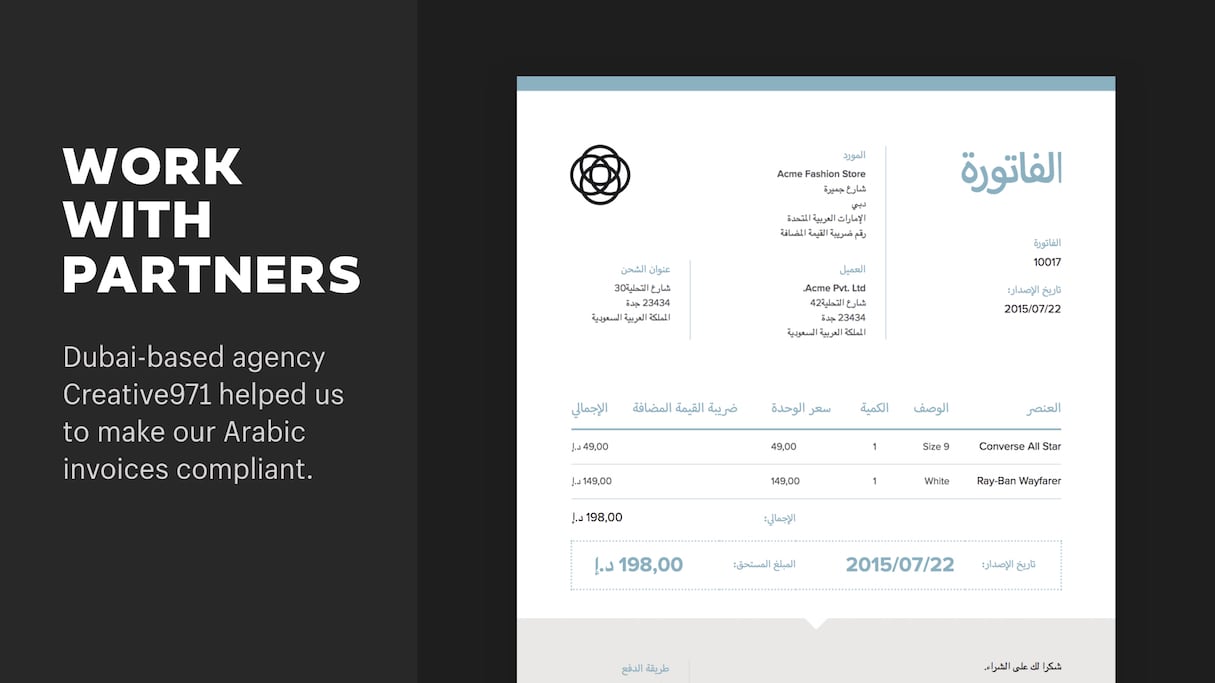
We also use the Shopify Experts Marketplace to find local Shopify agencies and partners, and look for those who might help us to better understand the local market. For example, we have worked closely with a Dubai-based agency Creative 971 to make our Arabic invoices compliant with the new VAT legislation in the United Arab Emirates.

It’s also a good idea to leverage the expert knowledge of local Shopify teams. The help and context that they can provide can be really invaluable. In our case, the Shopify India team helped us to support the Indian GST legislation when it was introduced back in 2017.
Using the tools, data, and connections at your disposal will help you better understand the market you want to work in.
You might also like: International Market Research: What You Need to Know Before Working with Clients Across Borders.
2. Translation and localization
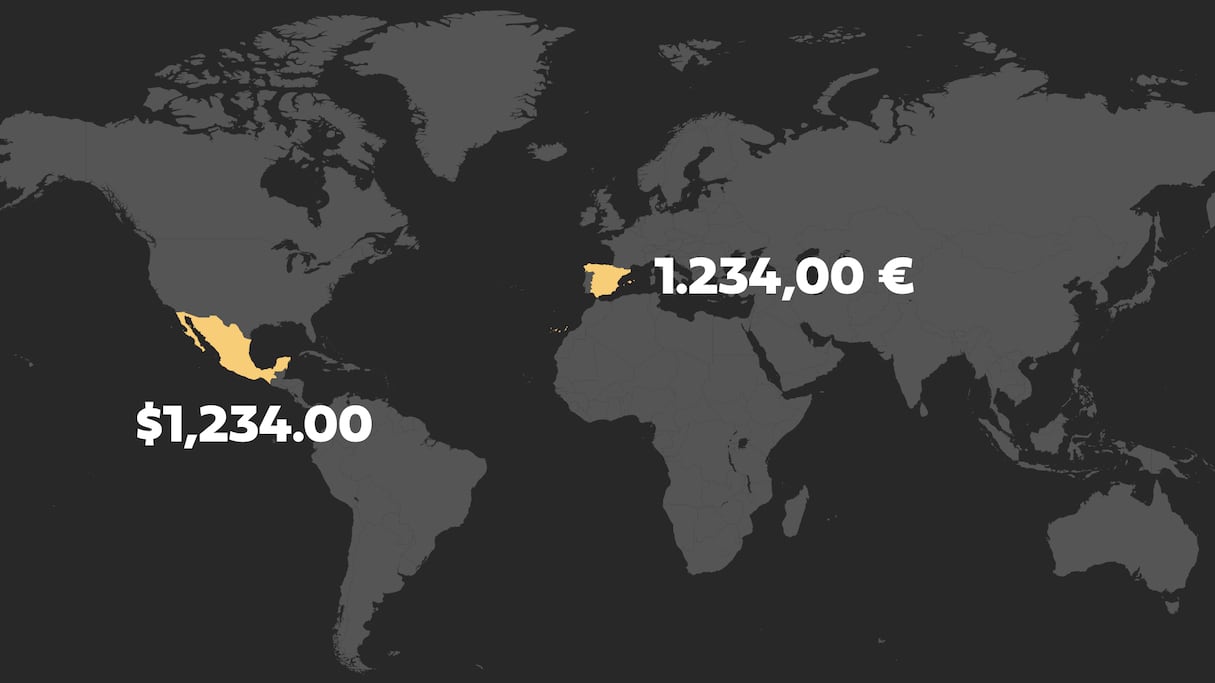
Once we determined that our app might be a good fit for the local market, it was time to look at translation and localization.
Whereas translation in the process of translating the content of your app and documentation to new languages, localization involves adjusting your app to meet the different functional and cultural expectations of local markets.
Localization is important because countries that use the same language might use different formats of dates, numbers, and currencies. For example, Spain and Mexico share the same language, but the Spanish use very different ways to display amounts and currency symbols.
Your app should take this into consideration and automatically display values in the correct format.
Translating an app to other languages should be carefully planned as it has its drawbacks and challenges. Every language version slows down the app development process because every new piece of in-app content has to be translated before updates to the app can be released.
If you are not doing your translations in-house, look for a translator with whom you can work on a long-term basis. Switching between translators might result in different parts of your app and documentation being translated in different styles. Your translators should also be readily available, even when you need to translate just a couple of sentences, for example, when releasing a new feature.
"Switching between translators might result in different parts of your app and documentation being translated in different styles."
Your translators should also have good knowledge of ecommerce and the area your app focuses on. In our case, this means that translators need to understand the local accounting legislation and how certain terms need to be translated on our invoices.
Finally, you should make your translations as consistent with Shopify as possible. Some words or phrases can be translated in multiple ways. In such cases, it’s always good practice to check how Shopify has translated these words, and use the same translations in your app. This is important to make sure users are not confused when switching between the Shopify Admin and your app.
Translation and design
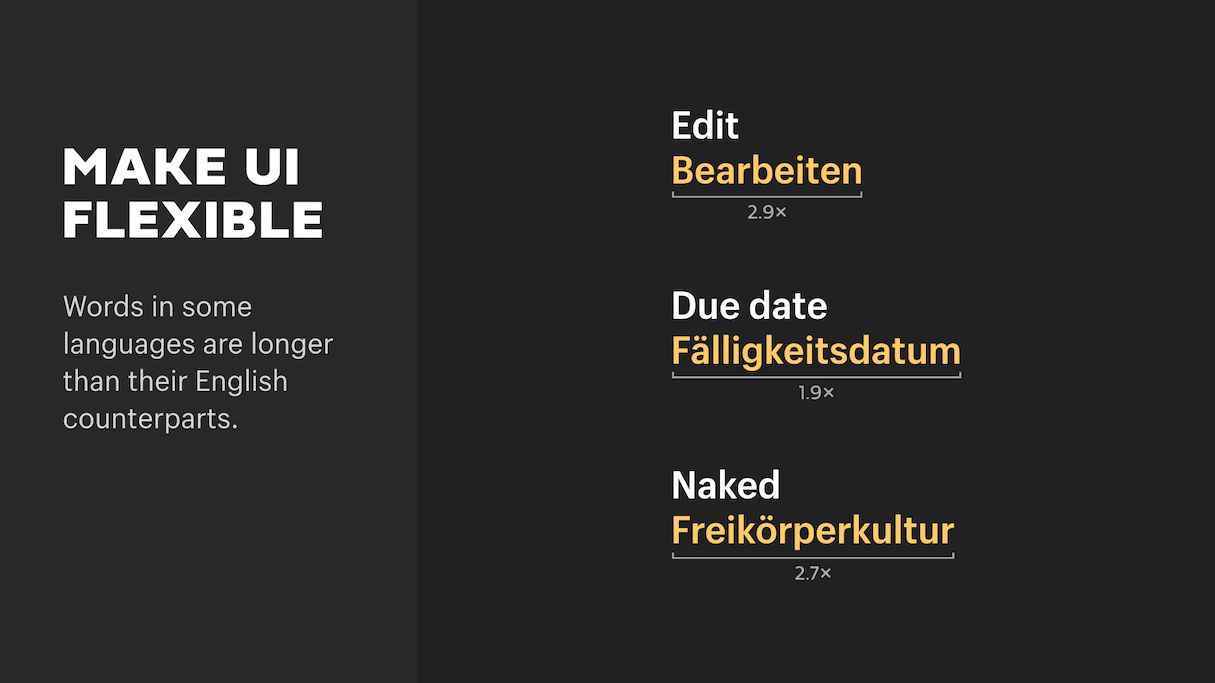
When translating, it’s important to note that words in some languages are often longer than their English counterparts. You need to make sure your user interface is flexible enough to adapt to content of variable lengths.
Keep in mind too that languages like German often compound multiple words into a single long one. This makes these words impossible to display over multiple lines. Therefore, we’d highly recommend picking German as one of the first languages to support in your app. If you can fit German words to your user interface, it’s probably flexible enough to fit any other language.

You should also consider supporting languages written from right to left, like Arabic, Farsi, or Hebrew. There are thousands of Shopify stores in countries where these languages are spoken, but only a handful of apps that support them. This, again, is a unique opportunity to get users from these new emerging markets.
The way we implemented support for these languages is by using a simple tweak—we never hardcode left and right values in our stylesheets, but use properties instead. This allows us to automatically generate stylesheet files for both left-to-right and right-to-left languages, and display our documents and potentially the user interface in both types of languages.

If you use different font families in your app—for example, to allow users to customize their email or popup templates—pick fonts that include an extended set of Latin characters. These characters include various Latin letters with additional glyphs and accents that are used by many European languages.
This will ensure there are no letters that fall back to the default font, and your app can correctly display content in languages like Slovak, Turkish, Finnish, or even Vietnamese.

If you support languages like Arabic, Chinese, or Japanese, make sure you use different font families for these languages as well. Ideally, all font families in Latin should have their visual equivalents in their Asian counterparts.
This will make your templates consistent across all the languages your app supports. It will also allow your Asian users to fully use all the different styles of typography your app offers.
You might also like: Embrace Localization and Multilingual Content with HTML and CSS.
3. Content marketing and support
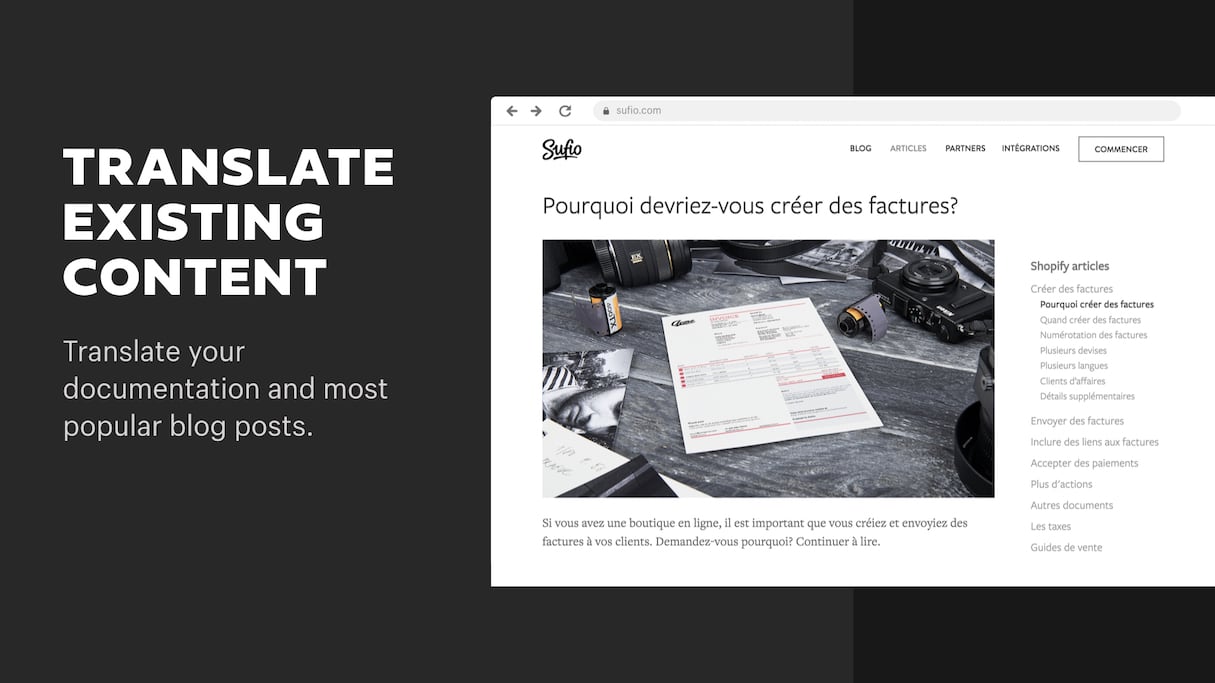
One of your starting points of building a multilingual app should be translating your documentation and your most popular blog posts into local languages. If your target audience speaks only Spanish, documentation written in English—however helpful and engaging—isn’t going to get you very far, or give a great first impression.
As previously mentioned, it’s important to prioritize working with one translator if possible. Your goal is to create a consistent, authentic experience for your users, and this will help guard against any differences in terms of terminology, tone, and phrasing.
Well-translated documentation can be very helpful in terms of the support you offer. While you’ll likely need to expand your team in order to provide customer support in multiple languages, in addition to reducing the number of support requests in the first place, great documentation will make it easier for your new colleagues to provide clear and consistent support while they get up to speed with your app.
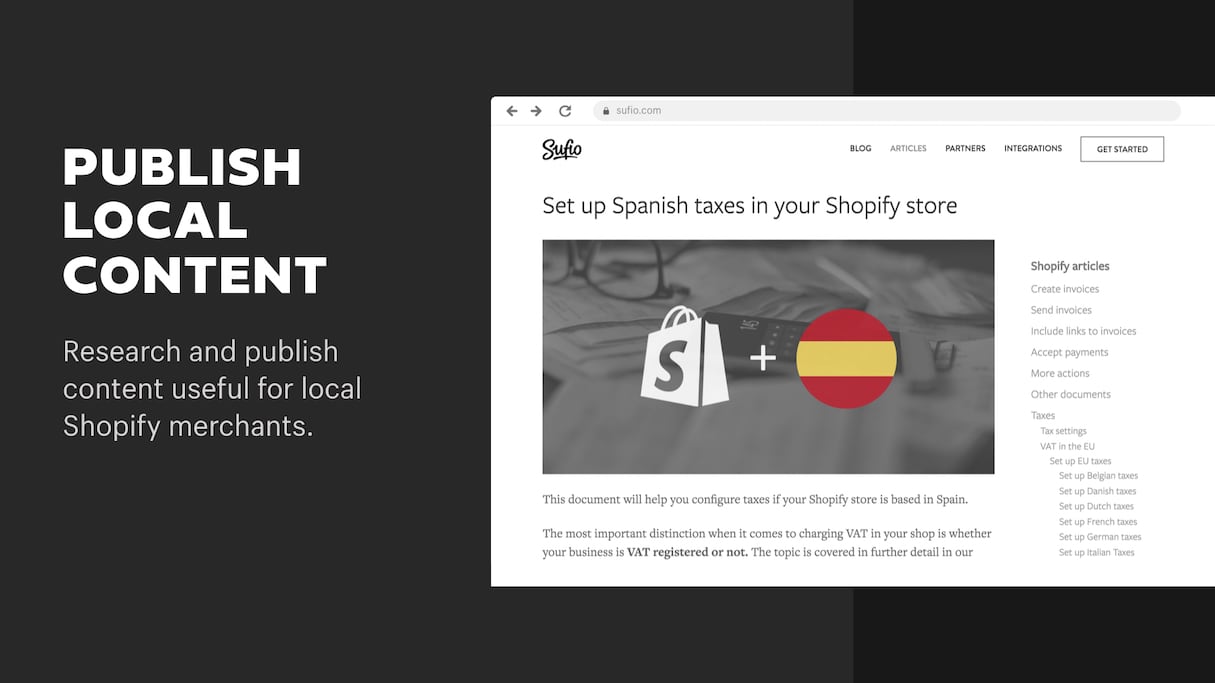
Research and publish content useful for local Shopify merchants. For example, we have published articles that help merchants to correctly set up invoices and taxes in their country, because that information is relevant to our local users.
Such country-specific content can be an important part of your content marketing strategy. In many cases, there are few existing articles on these topics. Therefore, your content will rank high in search engines and can get you a lot of free organic traffic to your website.
In these cases, it’s best practice to publish such content in English as well as the local language. This ensures that all bases are covered, as some of your potential new users might still be searching in English. This extra step increases the chance of them finding you, and being pleasantly surprised to discover that you’re already catering to their native tongue.
"This extra step increases the chance of users finding you, and being pleasantly surprised to discover that you’re already catering to their native tongue."
Again, reach out to local Shopify Partners to understand the unique challenges and customs of their markets. Besides helping you to identify topics that are important to local merchants, they can also help you promote your content once it has been published.
You might also like: Customer Service Strategy: How to Build, Augment, and Scale Your Support Offering.
Expand into new markets
Shopify’s expansion into new markets gives us all a unique opportunity to reach new customers.
A few months ago, we launched German and French versions of our app. From the very first day, we have seen growth in the number of German and French merchants using our app in their own language.
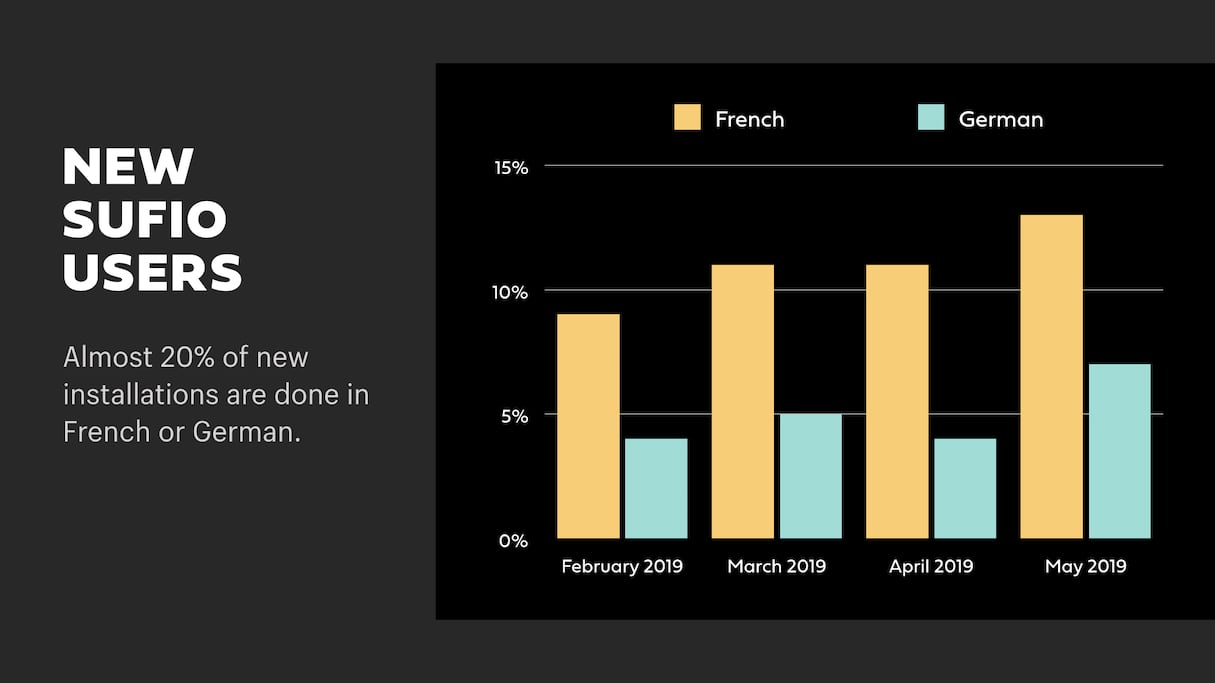
Today, almost 20 percent of new installations of our app are done in either French or German, and we hope this number will grow over time as we translate our app to more languages.
Key takeaways
When you start exploring how to make your app multilingual, there are three key things to keep in mind:
-
Do the groundwork: Be led by data when deciding which languages your app will support
-
Build long term relationships with your translators: Find someone with great domain knowledge and commit to them
- Get to know the neighborhood: Work with the local Shopify community to understand the local market and how your content can best serve them
By going multilingual, we are opening our apps to thousands of merchants who would be unable to use us otherwise. In turn, this will allow the entire Shopify community to expand into new markets and grow truly global.
Read more
- How to Improve Your Shopify App's Onboarding Flow
- 4 Easy Ways to Deploy Your Website or App
- How to Build a Shopify App: The Complete Guide
- Everything You Need to Know About Development Stores
- How to Authenticate Your Embedded App in the Shopify Admin
- Using Placeholder Images for Products with the placeholder_svg_tag Filter
- Checkout Extensibility Opens New Ways to Customize Checkouts on Shopify
- How To Use Translation Keys To Create Internationalized Themes
- 5 Community-Built API Tools Developers Should Check Out
- Your guide to the Fulfillment Orders API migration
Want to catch more of the track sessions from Shopify Unite 2019? Watch them all on our YouTube channel.

